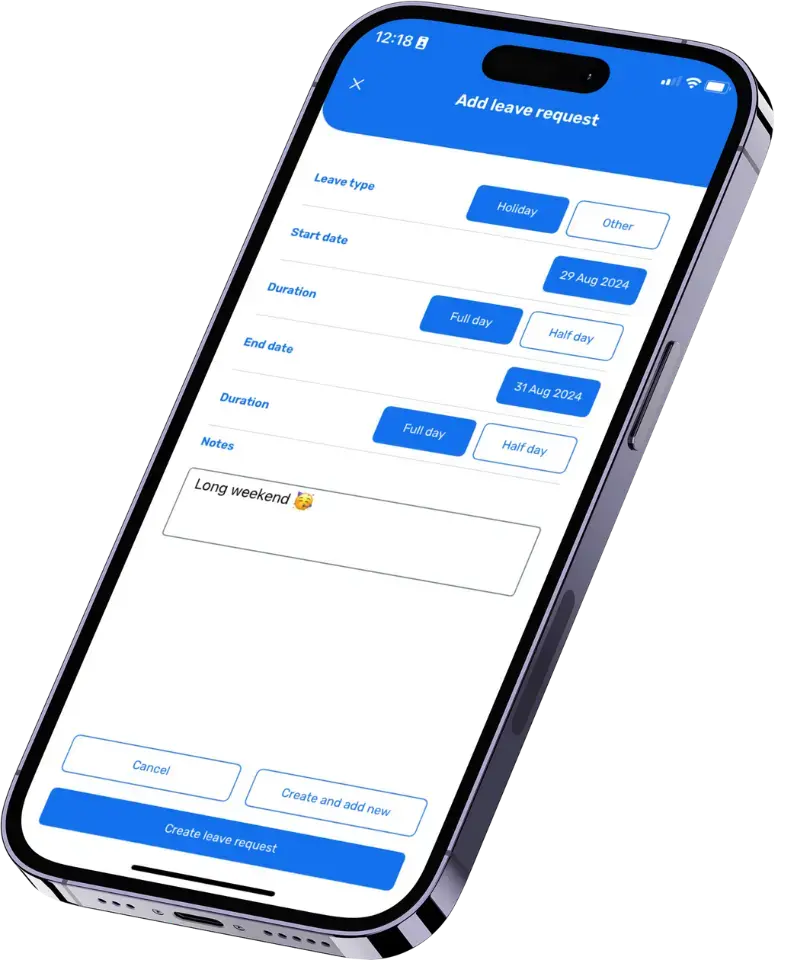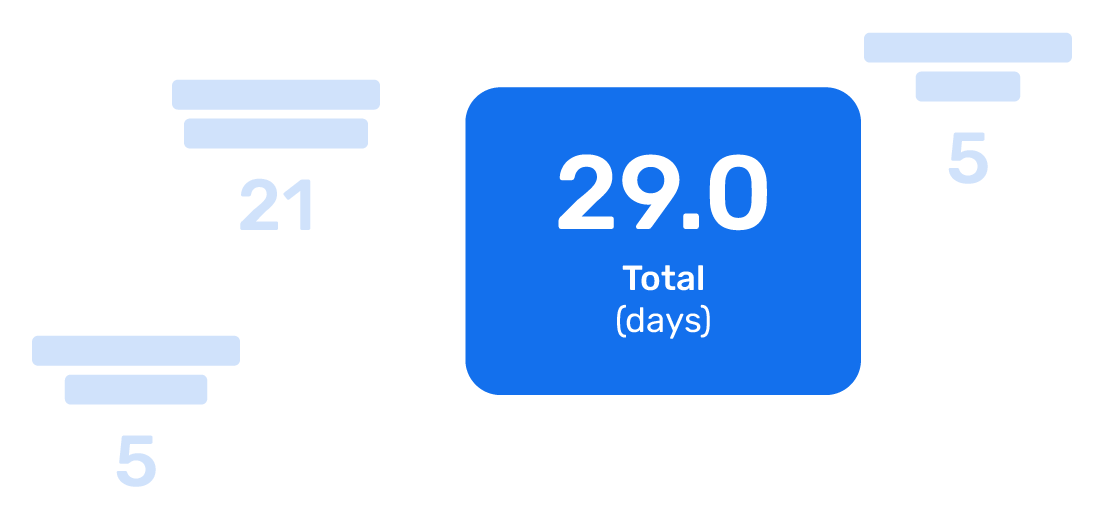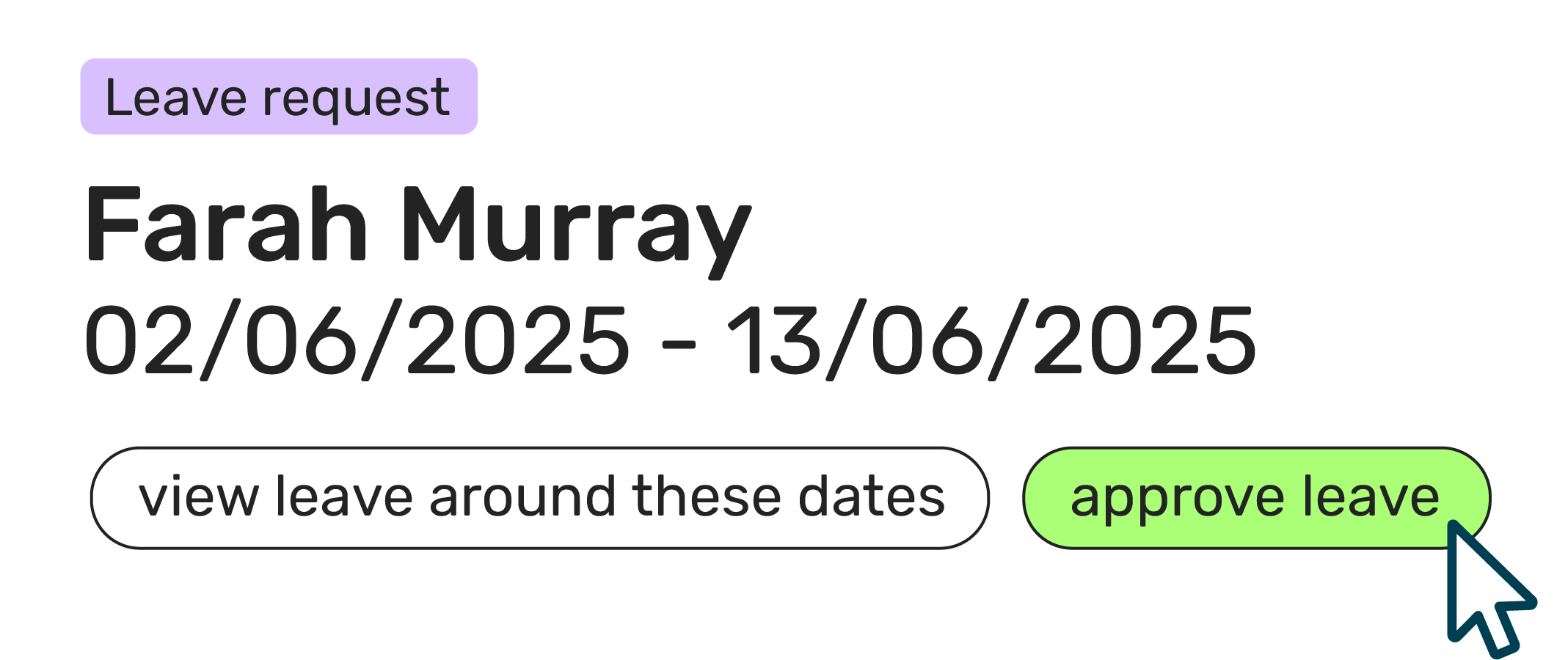Absence Management Software
Gain a deeper understanding of employee absence and improve productivity.
- Cut down on admin so you can focus on your people
- Support staff wellbeing by managing sickness absence proactively
- Stay organised with all absence records in one place

/Monitor%20absences.webp)
/Schedule%20holiday%20allowance@2x.webp)



/Dashboard%20-%20company%20highlights@2x.webp)






.webp?width=564&height=513&name=Group%2029%20(1).webp)